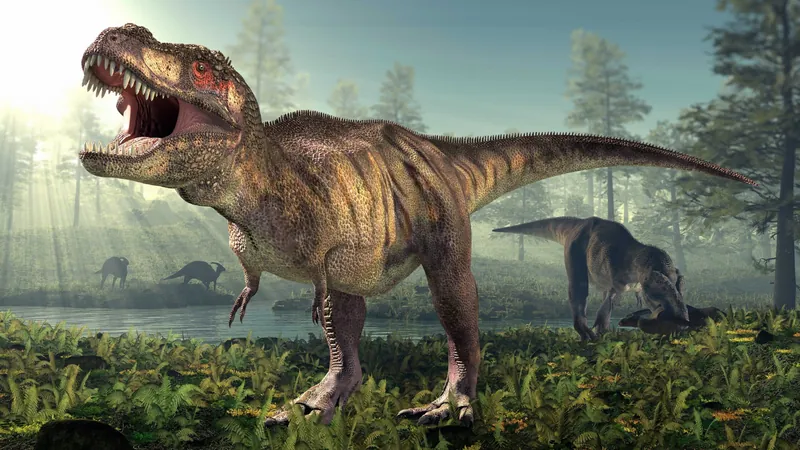
The Majestic Tyrannosaurus Rex: Unraveling the Mystery of the Largest Predator
2024-11-20
Author: Liam
The Size of Tyrannosaurus Rex
Have you ever wondered just how massive the Tyrannosaurus rex truly was? This iconic dinosaur, renowned for its size and ferocity, has captivated our imagination for decades. But new discoveries shed light on the precise measurements of this behemoth from the past and its place in the ecological hierarchy of the prehistoric world.
Colossal Nature
The term 'behemoth' perfectly encapsulates the T. rex's colossal nature, much like the monstrous being described in the Bible. Standing at an imposing height of approximately 12 feet (3.7 meters) at the hips and stretching up to 40 feet (12 meters) in length, the T. rex was, without a doubt, one of the largest terrestrial carnivores to ever walk the Earth. But how did it achieve such impressive dimensions?
Apex Predator
Fossils reveal that T. rex was not just a predator; it was an apex predator, reigning supreme in its ecosystem during the Late Cretaceous period around 66 million years ago. The dinosaur’s formidable mass, estimated to weigh between 9 to 14 tons, allowed it to overpower virtually any creature it encountered. Its massive skull, filled with over 50 serrated teeth, was designed to crush bone and tear flesh, demonstrating nature's incredible adaptation for survival through evolution.
Fossil Discoveries
Paleontologists have uncovered various fossils, contributing significantly to our understanding of the T. rex and its contemporaries. There are also 'trace fossils,' including footprints and even dinosaur coprolites (fossilized feces), which provide insights into the behavior and diet of this giant. The fossilization process plays a crucial role in uncovering the mysteries of these ancient giants, giving us a glimpse into their lives long before humanity roamed the planet.
Evolutionary Significance
Furthermore, the evolutionary path of dinosaurs is deeply intertwined with their ecological roles. The T. rex's dominance can be attributed to its adaptability and the unique anatomical features that set it apart from other dinosaurs, such as its powerful hind limbs and formidable jaws. These adaptations allowed it not only to hunt effectively but also to thrive in a rapidly changing environment.
Legacy
But what does the T. rex's legacy mean for us today? Understanding its evolutionary journey helps us comprehend broader biological principles, including natural selection and adaptation, which apply across species over millennia. In essence, the T. rex is more than just a fearsome predator; it is a symbol of survival and adaptation in the face of environmental challenges.
Conclusion
As we continue to explore the fascinating world of paleontology, the mystery of the largest T. rex may not be entirely solved. Yet, with every discovery, we inch closer to understanding the lives of these magnificent creatures. So, next time you catch a glimpse of this mighty dinosaur in popular culture, remember: there’s a colossal story behind its grandeur that continues to be unearthed!









 Brasil (PT)
Brasil (PT)
 Canada (EN)
Canada (EN)
 Chile (ES)
Chile (ES)
 España (ES)
España (ES)
 France (FR)
France (FR)
 Hong Kong (EN)
Hong Kong (EN)
 Italia (IT)
Italia (IT)
 日本 (JA)
日本 (JA)
 Magyarország (HU)
Magyarország (HU)
 Norge (NO)
Norge (NO)
 Polska (PL)
Polska (PL)
 Schweiz (DE)
Schweiz (DE)
 Singapore (EN)
Singapore (EN)
 Sverige (SV)
Sverige (SV)
 Suomi (FI)
Suomi (FI)
 Türkiye (TR)
Türkiye (TR)